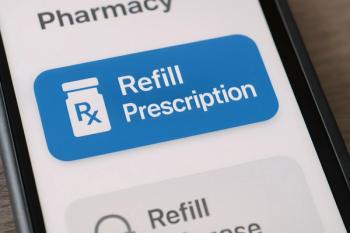
Study: CDK4/6 Mechanisms of Resistance Differ By Type of Inhibitor Used
Although CDK4/6 inhibitors prolong progression-free survival for patients with estrogen receptor-positive breast cancer, the ideal treatment for each patient is currently unclear until adverse effects appear.
Although the mechanisms of resistance to cyclin-dependent kinase (CDK) 4/6 inhibitors can differ according to which drug is used, understanding these mechanisms can give insight into treatment strategies available after resistance is acquired, according to research presented at the 2019 San Antonio Breast Cancer Symposium.
There are several mechanisms of CDK4/6 inhibitor resistance, including loss of retinoblastoma, CDK6 amplification, and high CDK2 activity. However, the researchers noted that the mechanism of resistance between ribociclib (Kisqali) and abemaciclib (Verzenio) may be different because the CDK6 level was different.
CDK 4/6 inhibitors have been found to prolong progression-free survival for patients with advanced estrogen receptor (ER)-positive breast cancer. Despite their high efficacy, however, finding the optimum CDK 4/6 inhibitor treatment remains difficult until the inevitable emergence of adverse effects, which are the key differentiators between treatments. Furthermore, the authors noted that an optimum treatment after acquisition of resistance is poorly understood.
In order to better understand the mechanisms of resistance, researchers established hormone-resistant cell lines, including estrogen deprivation-, fulvestrant-, ribociclib-, and abemaciclib-resistant cell lines. In addition, they established CDK6 overexposed cell lines from the MCF-7 cell line using the stably transfected CDK6 expression vector.
Using these cell lines, the researchers identified the efficacies of ribociclib and abemaciclib, noting that luminal cell lines exhibited high sensitivity to the drugs compared with non-luminal cell lines. The hormone-resistant cell lines exhibited similar sensitivity as that of MCF-7.
Following this analysis, the researchers compared the ribociclib-resistant cell lines (RIBR) and the abemaciclib-resistant cell lines (ABER). These models confirmed that RIBR decreased ribociclib sensitivity, whereas ABER decreased abemaciclib sensitivity, as expected. They noted that when compared with the ER-positive/estrogen deprivation-resistant cell line, CDK6 levels were upregulated in ABER and remained unaltered in RIBR.
Finally, the phosphoinositide 3-kinases (PI3K) inhibitor and mTOR inhibitor suppressed cell growth in both RIBR and ABER to the same extent as in the ER-positive, estrogen deprivation-resistant cell line, which indicates that resistance to CDK4/6 inhibitors was still dependent on the PI3K/Akt/mTOR pathway, according to the study.
The researchers concluded that although the mechanisms of resistance between ribociclib and abemaciclib may be different, using drugs that target the PI3K/Akt/mTOR pathway and chemotherapeutic drugs would be an effective strategy after the patient acquires resistance.
REFERENCE
Knudsen ES, Iida M, Toyosawa D, et al. Different mechanisms of CDK4/6 inhibitor resistance between ribociclib and abemaciclib [Abstract PD2-04]. Presented at: San Antonio Breast Cancer Symposium 2019. December 11, 2019. San Antonio, TX.
Newsletter
Stay informed on drug updates, treatment guidelines, and pharmacy practice trends—subscribe to Pharmacy Times for weekly clinical insights.













































































































































































































